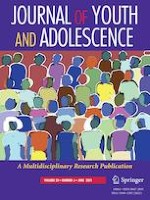19-02-2021 | Empirical Research
School Engagement Among Youth Entering Probation
Gepubliceerd in: Journal of Youth and Adolescence | Uitgave 6/2021
Log in om toegang te krijgenAbstract
Strong school engagement is crucial for school success among adolescents and particularly important for reducing recidivism. Yet, little is known about school engagement among youth serving probation while attending community schools. This study tested the multivariate associations between risk and promotive factors with three components of school engagement (behavioral, cognitive, and emotional). The study’s sample was derived from 5,378 intake assessments (23.6% female) of youth entering juvenile probation in a Pacific Northwest county who were assessed as either moderate or high risk for recidivism. The racial composition of the sample was predominantly White or European American (56.0%) and Black or African American (24.2%) and ranged in age from 10 to 19 years old (M = 15.5, SD = 1.46). The results suggest that dimensions of school engagement can be strengthened by increased relational and skill-building supports throughout youth’s social ecologies. The promotive factors of prosocial attitudes and prosocial community connections were significantly associated with increased school engagement. The implications of these findings are discussed regarding opportunities and strategies that promote school engagement for youth on probation.
